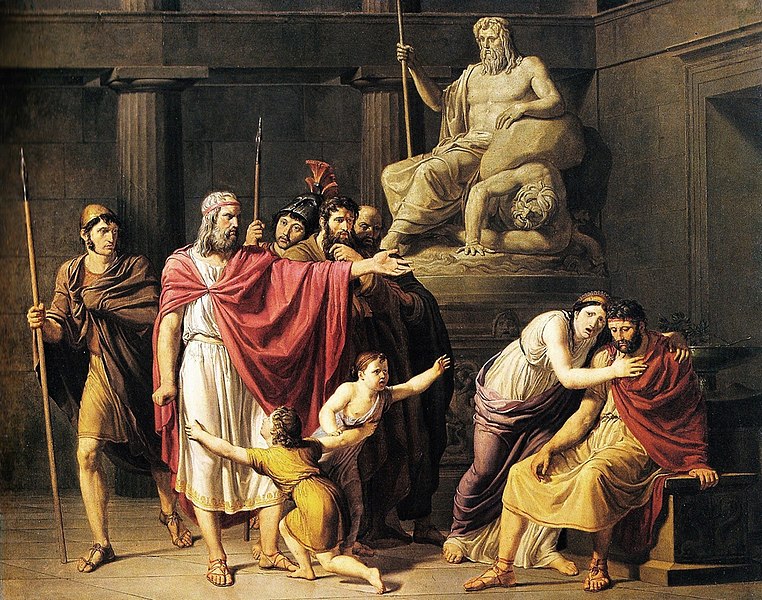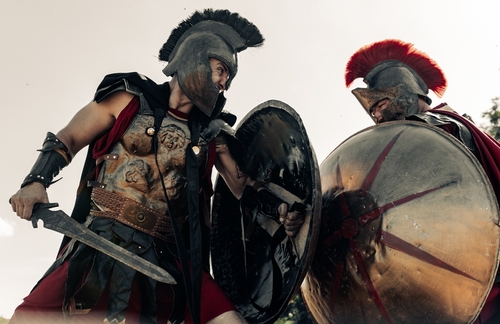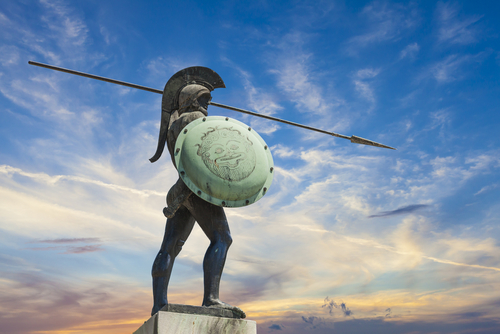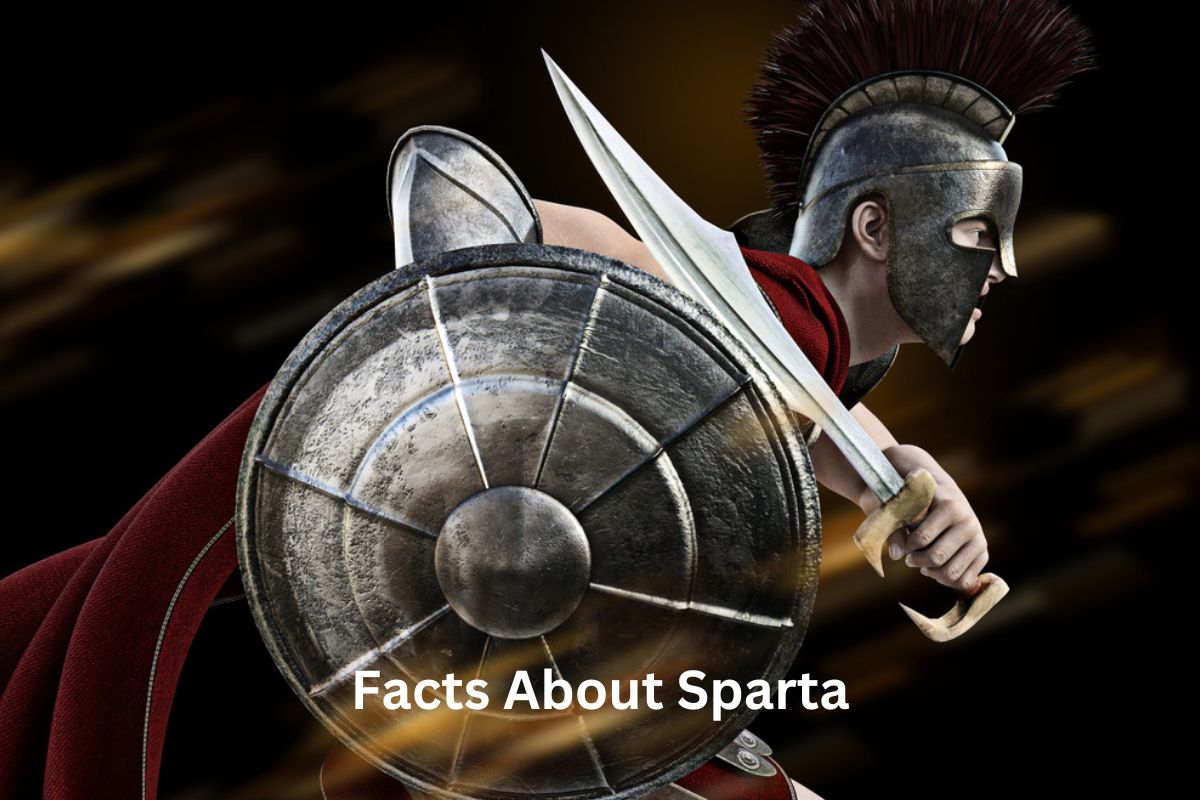Sparta was an influential city-state in ancient Greece, known for its unique societal structure, military strength, and austere way of life. Located in the southeastern part of the Peloponnese peninsula, the Spartan civilization developed a culture deeply focused on discipline, endurance, and warfare.
Spartan society was marked by its rigorous education system, dual monarchy, the relative empowerment of women, and the servitude of a large population group known as the helots.
Their formidable military power, epitomized by the heroic stand of 300 Spartans at the Battle of Thermopylae, made them one of the most respected and feared forces in the ancient world.
Yet, over time, Sparta began to decline, eventually falling to the Romans in 146 BCE. Today, the ancient city is an archaeological site near the modern town of Sparti, offering a glimpse into its storied past.
Sparta Facts
1. Sparta was an ancient Greek city-state located in the southeastern part of the Peloponnese peninsula
Sparta was one of the most powerful city-states in ancient Greece, located in the region known as Laconia, in the southeastern part of the Peloponnese peninsula.
Also Read: Sparta Timeline
The city was situated on the banks of the River Eurotas, surrounded by mountains that provided a natural defense. These geographical features allowed the Spartans to focus on building their society internally, rather than on expansion like many other city-states.

2. It had a unique education system, the Agoge, focused on discipline, endurance, and military training
In Sparta, education focused heavily on military training, obedience, and endurance in harsh conditions. The Agoge, as the system was known, began when boys turned seven years old.
They were taken from their homes and sent to live in military barracks where they were trained to be soldiers. The education was both physical, learning to fight and endure hardship, and mental, learning to be disciplined and loyal to Sparta.
Also Read: Famous Spartans
This harsh training was intended to produce strong, disciplined warriors, and it formed the basis of Sparta’s military power.
The system was mandatory for all male Spartan citizens and lasted until they were 30, at which point they could become full citizens and serve in the military.
3. Sparta had a dual monarchy, ruled by two kings from separate families
Unlike most Greek city-states, which were governed by democracy or oligarchy, Sparta had a dual monarchy. Two kings ruled concurrently, each from a separate family line: the Agiads and the Eurypontids.
The two king system is believed to have originated from the historical necessity of leading armies during wars. Each king held religious, military, and judicial authority.
While both kings shared power, they could veto each other’s decisions, creating a form of checks and balances. This dual kingship system in Sparta was unique in ancient Greece.
4. Women in Sparta had more freedoms compared to other Greek city-states
Women in Sparta enjoyed more freedoms compared to women in other Greek city-states. They did not live a confined life and were permitted to move freely in society.
They were educated, mainly in physical fitness, music, dance, and other arts. This was in line with the Spartan belief that strong and healthy mothers would produce strong warriors.
Spartan women could also own property and control their own wealth, which was unusual in the patriarchal societies of ancient Greece. Upon the death of their husbands or fathers, women could inherit property, making them potentially influential in economic affairs.

5. The economy of Sparta was reliant on a class of serfs known as helots
The helots were a subjugated population group in Spartan society, essentially serfs who were tied to the land they worked. Originally free Greeks from regions like Messenia, conquered by the Spartans, the helots outnumbered the Spartan citizens significantly.
They worked primarily as farmers and domestic servants, providing the necessary labor for Spartan society to function. The Spartans treated the helots harshly, maintaining control through a system of strict oversight and suppression.
There was always a fear of a helot revolt, and thus the Spartan system perpetuated a state of alertness and militarization.
6. The Spartan military was renowned for its discipline and skill
The Spartans were renowned for their military discipline, tactics, and power. From childhood, Spartan males were trained for warfare and conditioned to value their civic duty above all else.
They became full-time soldiers by the age of 20 and remained on active duty until they were 60, thus spending most of their lives as warriors.
The Spartan army was structured around a phalanx formation, a close-rank, deep formation of hoplites (heavily-armed infantry) with long spears and large round shields.
This military formation was almost invincible on the open battlefield. The Spartans’ rigorous training and superior tactics made their military one of the most feared in the ancient world.
7. Spartans famously fought the Battle of Thermopylae against the Persian army
The Battle of Thermopylae was fought in 480 BCE during the second Persian invasion of Greece. The battle is most famous for the heroic stand made by a small Greek force, led by 300 Spartan warriors under King Leonidas, against a vastly larger Persian army led by King Xerxes I.
Despite being heavily outnumbered, the Greeks managed to hold off the Persians for three days. The stand at Thermopylae allowed the other Greek city-states valuable time to prepare their defenses.
Although the Spartans were ultimately defeated, their valiant defense against such overwhelming odds became a legendary symbol of resistance against invaders.

8. Spartans were known for their “laconic wit,” a concise and often humorous style of speech
Spartans were known for their unique way of communication known as “laconic wit,” named after Laconia, the region where Sparta was located.
Spartans preferred to use as few words as possible, believing in the effectiveness of brevity. Their remarks were often pointed and sarcastic, or insightful and humorous.
A famous example is when Philip II of Macedon, father of Alexander the Great, reportedly sent a message to Sparta saying “If I enter Laconia, I will raze Sparta,” to which the Spartans simply replied, “If.”
9. Sparta began to decline after its defeat by Thebes at the Battle of Leuctra in 371 BCE
Sparta’s decline began after its defeat by Thebes at the Battle of Leuctra in 371 BCE. The defeat shattered the myth of Spartan invincibility and significantly weakened their military power. Over the following years, Spartan influence continued to wane.
Spartan society was unable to adapt to the changing political landscape of Greece, leading to its eventual fall. The Romans conquered Sparta in 146 BCE, and the city gradually faded into obscurity.
10. Today, the ancient city of Sparta is an archaeological site
Today, the ancient city of Sparta is an archaeological site, with remnants of its storied past available for exploration. The modern town of Sparti, established in the 1830s, is situated near this site.
Visitors to the area can explore ancient Sparta’s ruins, including the theater, the acropolis, and the sanctuary of Artemis Orthia. Despite its military might in the ancient world, little remains of the formidable Spartan city-state, reflecting its stark decline and fall.
